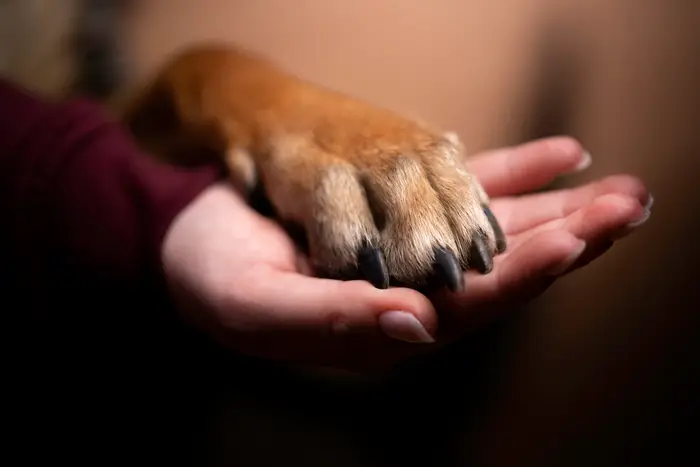Veterinarians Are Sharing The Biggest Early Warning Signs Of Cancer In Dogs

Early Warning Signs of Cancer in Dogs: What Every Pet Owner Should Know
Cancer is one of the leading health concerns for dogs, with approximately one in four dogs being diagnosed during their lifetime. For dogs over the age of 10, the risk increases significantly, with nearly half succumbing to the disease. This condition occurs when cells in the body grow uncontrollably, damaging healthy tissues. Unfortunately, cancer in dogs is becoming more prevalent due to factors like longer lifespans, selective breeding, environmental influences, and advancements in diagnostic techniques.
Early detection is critical to improving your dog’s chances of recovery and a prolonged, happy life. However, since dogs cannot communicate their discomfort or symptoms directly, many cases go undetected until the disease progresses. Here are some key signs to watch for and why they might indicate cancer in your beloved pet.

Behavioral Changes: A Subtle Indicator
One of the first signs of cancer in dogs is unusual behavior. Dr. Julie Bulman-Fleming, a veterinary oncologist, notes that behavioral shifts are often subtle and noticed only by those closest to the dog.
For instance, a dog may stop greeting you at the door, skip their usual morning routine, or become less enthusiastic about walks. Some dogs may isolate themselves, showing less interest in family activities. These changes can range from mild lethargy to severe fatigue, progressing over days or weeks.
This behavior often results from systemic inflammation caused by cancer, which makes your dog feel unwell. Dr. Bulman-Fleming compares it to how humans feel when battling the flu—tired, less hungry, and uninterested in daily activities.
Unusual Lumps and Bumps
Monitoring your dog for new lumps or bumps is crucial. While older dogs often develop benign growths, not all new masses are harmless. Dr. Robert B. Rebhun, a professor at UC Davis School of Veterinary Medicine, warns that firm, irregularly shaped, or rapidly changing lumps could be cancerous.
The American Kennel Club advises having any new growths examined by a veterinarian promptly. Early diagnosis can differentiate between benign and malignant masses, providing a better chance for successful treatment.

Increased Thirst and Frequent Urination
If your dog suddenly drinks excessive water or needs frequent potty breaks, it could be a warning sign. According to Dr. Bulman-Fleming, certain cancers increase calcium levels in the body, leading to extreme thirst. Other cancers affect kidney function, causing increased urination. Internal bleeding from cancer may also trigger thirst due to blood loss.
Owners often notice this symptom when their dog starts having accidents indoors or the water bowl needs constant refilling. If you observe these changes, consult your vet immediately.
Limping or Difficulty Moving
Large and giant breeds are particularly prone to bone or joint tumors, which can cause limping or reluctance to bear weight on a leg. Dr. Rebhun explains that these tumors may present as acute or gradual limping, sometimes accompanied by swelling in one limb.
While limping can result from injuries or arthritis, persistent discomfort warrants an X-ray to rule out cancer. Early detection is essential for effective treatment.

Unexplained Weight Loss or Appetite Changes
A sudden drop in weight or a loss of appetite could signal an underlying health issue, including cancer. Dr. Nick Dervisis, an oncologist at the Virginia-Maryland College of Veterinary Medicine, states that cancer can alter a dog’s metabolism, increasing energy demands and suppressing hunger.
Tumors in the digestive tract may interfere with nutrient absorption, while those in the mouth, throat, or stomach can make eating painful. If your dog consistently eats less or loses weight without explanation, seek veterinary care.

Why Regular Vet Check-Ups Are Crucial
While the above symptoms could stem from various conditions like infections, diabetes, or kidney disease, they should never be ignored. A comprehensive veterinary exam can identify the root cause and initiate the appropriate treatment plan.
Dr. Dervisis emphasizes the importance of regular check-ups and vigilant observation of your dog’s health. Noticing and addressing changes promptly is the best way to ensure early detection and treatment of cancer.

Protecting Your Dog’s Health
Cancer is a serious diagnosis, but catching it early can significantly improve outcomes. As a pet owner, your role in monitoring your dog’s behavior, physical condition, and daily habits is invaluable. Regular visits to the veterinarian and acting on any unusual changes can make all the difference.
Stay proactive, and you’ll give your furry companion the best chance at a healthy and happy life.

